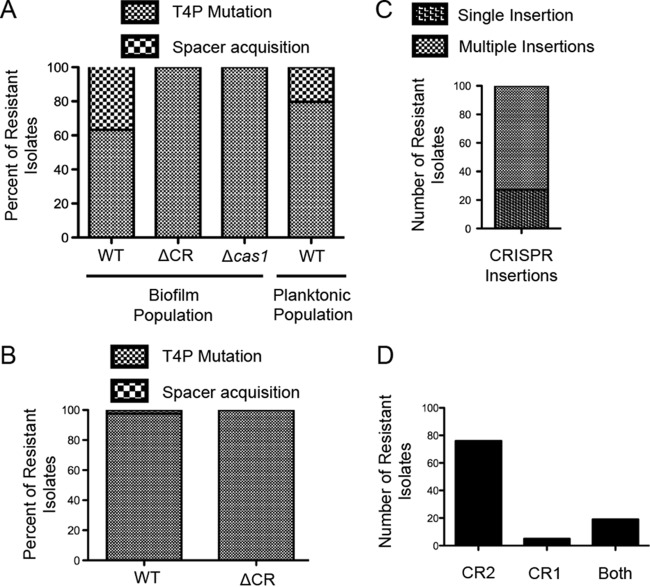FIG 4.
Resistance to DMS3vir in the biofilm enrichment assay is gained through either type IV pilus loss of function or Cas1-dependent spacer acquisition. After the second biofilm incubation in the biofilm enrichment assay, both the biofilm population and the planktonic population of P. aeruginosa were plated for single colonies. At least 200 colonies under each specified condition from at least two replicates were repatched on LB agar. (A) Isolates that were resistant to DMS3vir and twitch negative were scored as a type IV pilus (T4P) mutant, while isolates that were resistant to DMS3vir, that were twitch positive, and that demonstrated spacer acquisition, as determined by PCR of the CRISPR arrays, were scored as spacer acquisition positive. Type IV pilus mutant and spacer acquisition-positive isolates are displayed under each condition as a percentage of the total DMS3vir resistant population under that condition. (B) After 24 h of coincubation of either WT or CRISPR-deficient (ΔCR) P. aeruginosa isolates with DMS3vir at a multiplicity of infection of 0.01 at 37°C in 5 ml of LB, 200 single colonies from two replicates under each condition were isolated, scored, and displayed as described in the legend to panel A. (C and D) One hundred randomly selected spacer acquisition-positive isolates from the WT and DMS3vir coincubation conditions in the biofilm enrichment assay were scored for insertion of either a single spacer or multiple spacers (C) and insertion of a new spacer into the CRISPR1, CRISPR2, or both CRISPR1 and CRISPR2 arrays (D), as determined by PCR.

